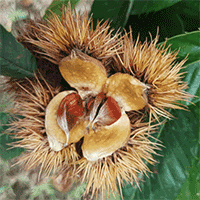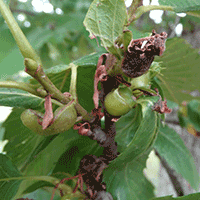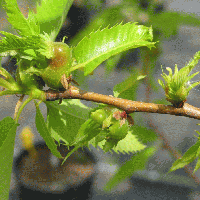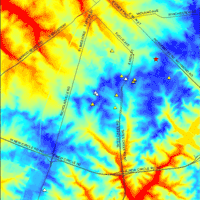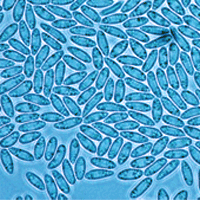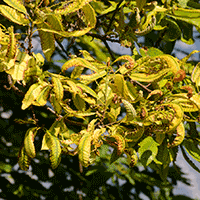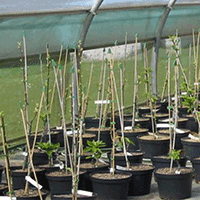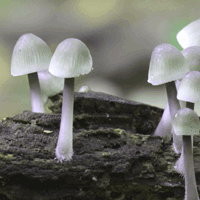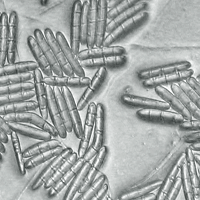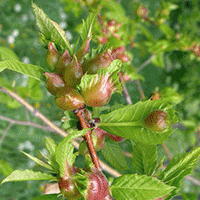
Fungal community of necrotic and healthy galls in chestnut trees colonized by Dryocosmus kuriphilus (Hymenoptera, Cynipidae)
E Jordán Muñoz-Adalia (1) , Daniel Rodríguez (2), María Casado (2), Julio Diez (3-4), Mercedes Fernández (2-4)
iForest - Biogeosciences and Forestry, Volume 12, Issue 4, Pages 411-417 (2019)
doi: https://doi.org/10.3832/ifor3014-012
Published: Aug 13, 2019 - Copyright © 2019 SISEF
Research Articles
Abstract
Dryocosmus kuriphilus is a non-native pest that has recently spread through Europe with a special incidence along the Mediterranean Basin. The presence of this exotic wasp (originally from Asia) threatens stands and orchards of sweet chestnut (Castanea sativa Mill.) as it reduces tree growth and consequently fruit production. In this study the living mycobiota in leaves, healthy and necrotic galls collected from two sites in Cantabria (Northern Spain) was investigated. A total of twenty-two fungal taxa based on morphological and molecular traits were determined. In addition, we calculated fungal diversity and identified the dominant taxa among members of the mycobiota. Seven log-linear models were used to analyse whether fungal abundance varied between sites, types of plant material or fungal taxa. Our findings highlight the complex interactions between plant hosts, insect and the endophytic community, and are of potential interest in relation to the biological control of this important pest.
Keywords
ACGW, Biological Control, Castanea sativa, Endophytic Fungi, Entomopathogens, Fungal Community, Necrotic Gall
Authors’ Info
Authors’ address
Forest Sciences Center of Catalonia (CTFC), Carretera St. Llorenç de Morunys, km.2, 25280 Solsona (Spain)
María Casado
Mercedes Fernández
Department of Agroforestry Sciences, University of Valladolid. Avenida de Madrid 44, 34071 Palencia (Spain)
Department of Vegetal Production and Forest Resources, University of Valladolid. Avenida de Madrid 44, 34071 Palencia (Spain)
Mercedes Fernández
Sustainable Forest Management Research Institute, University of Valladolid - INIA, Avenida de Madrid 44, 34071 Palencia (Spain)
Corresponding author
Paper Info
Citation
Muñoz-Adalia EJ, Rodríguez D, Casado M, Diez J, Fernández M (2019). Fungal community of necrotic and healthy galls in chestnut trees colonized by Dryocosmus kuriphilus (Hymenoptera, Cynipidae). iForest 12: 411-417. - doi: 10.3832/ifor3014-012
Academic Editor
Alberto Santini
Paper history
Received: Dec 01, 2018
Accepted: Jun 06, 2019
First online: Aug 13, 2019
Publication Date: Aug 31, 2019
Publication Time: 2.27 months
Copyright Information
© SISEF - The Italian Society of Silviculture and Forest Ecology 2019
Open Access
This article is distributed under the terms of the Creative Commons Attribution-Non Commercial 4.0 International (https://creativecommons.org/licenses/by-nc/4.0/), which permits unrestricted use, distribution, and reproduction in any medium, provided you give appropriate credit to the original author(s) and the source, provide a link to the Creative Commons license, and indicate if changes were made.
Web Metrics
Breakdown by View Type
Article Usage
Total Article Views: 44619
(from publication date up to now)
Breakdown by View Type
HTML Page Views: 37008
Abstract Page Views: 3830
PDF Downloads: 2918
Citation/Reference Downloads: 0
XML Downloads: 863
Web Metrics
Days since publication: 2337
Overall contacts: 44619
Avg. contacts per week: 133.65
Citation Metrics
Article Citations
Article citations are based on data periodically collected from the Clarivate Web of Science web site
(last update: Mar 2025)
Total number of cites (since 2019): 12
Average cites per year: 1.71
Publication Metrics
by Dimensions ©
Articles citing this article
List of the papers citing this article based on CrossRef Cited-by.
References
Possibilities of biological control on Dryocosmus kuriphilus with entomopathogenic fungi. In: Proceedings of the “2nd International Meeting on Dryocosmus kuriphilus Yasumatsu”. Biocastanea, Ponferrada (León, Spain) 12-16 Nov 2014, Meeting Program, pp. 2.
Gscholar
Phylogenetic and phenotypic characterisation of Sirococcus castaneae comb. nov. (synonym Diplodina castaneae), a fungal endophyte of European chestnut. Fungal Biology 121 (8): 625-637.
CrossRef | Gscholar
Vespeta del castanyer; Dryocosmus kuriphilus. [The chestnut wasp, Dryocosmus kuriphilus]. Generalitat de Catalunya, Department of Agriculture, Livestock, Fisheries, Food and Natural Environment, Forest Management Service and the Plant Health Service, Barcelona, Catalunya, Spain, pp. 1-2. [in Spanish]
Gscholar

